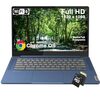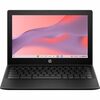Brief Introduction to 9 Linux Distributions
Shawn Powers of Linux Journal briefly introduces 9 Linux distributions in about 6 minutes. He starts with 5 tiny Linux distros, which are well suited for low end computers and ends with 4 distros which are more demanding when it comes to hardware resources.
- Puppy linux
- Puppy Linux is a very small distro (93MB) that can be run entirely from RAM which makes it lightning fast.
- DSLinux
- The main goal of the DSLinux project is to port the Linux operating system to the video game console NintendoDS.
- Slax
- Slax is a small and fast Linux distribution with a modular approach based on the original Linux distribution Slackware. You can build your own Slax image by selecting the packages to include from the application directory on the Slax website.
- MEPIS
- MEPIS is based on Debian Linux and is designed for simplicity and ease of use. MEPIS comes with a lot of applications for a wide variety of tasks.
- Linux Mint
- Linux Mint is also based on the solid Debian Linux and is compatible with Ubuntu repositories. It has a strong focus on usability and on making stuff like WiFi, multimedia, screen resolution, etc. work out of the box.
- PCLinuxOS
- PCLinuxOS is based on Mandriva and includes the same Control Center for configuring the system and the draklive installer.
- openSUSE
- The ambitious goals of the openSUSE project are to make it the easiest Linux distribution to obtain, the most widely used open source platform, and to dramatically simplify the packaging process to make it the number one choice for Linux hackers and application developers.
- Mandriva
- The highlights of Mandriva Linux, formerly known as Mandrake, are GUI tools for configuring the system, and the transfugdrake migration tool, for importing documents and settings from a Windows system.
- Gentoo
- The Gentoo developers call their system a metadistribution because of its adaptability. Gentoo is based on the Portage package management system, which requires to compile the source code of packages locally. Gentoo is also advertised with extreme configurability, which also means that configuration takes it time.
There are many Linux distributions. Too many too name them all here. While diversity is certainly a strength of Open Source software, it sometimes makes it hard to choose the best system to satisfy your needs. Personally, I currently use Ubuntu as a desktop and Debian as a server operating system. What are your favorite Linux distributions and why?
To be informed of new posts, subscribe to the RSS feed or follow Linux Netbook on Facebook.
Affiliate Disclosure: External links on this website may contain affiliate IDs, which means that I earn a commission if visitors make a purchase via such a link. For details, see the disclosure page.





